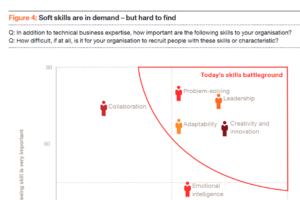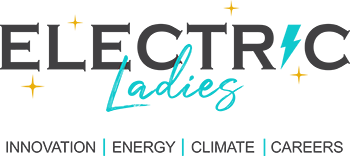What if U.S. Women’s Soccer had not hired Rapinoe because she was just too “different”? Would they still be repeat World Cup Champions?
In a recent Boston Consulting Group survey of senior executives, 76% “listed innovation as a ‘top-three’ strategic priority—the highest level in the survey’s history,” which goes back to 2004. And yet, “77% of CEOs find it difficult to get the creativity and innovation skills they need,” according to a recent PwC survey.
Why the disconnect?
They keep hiring the wrong people! They keep hiring people who “fit in,” focused on checking off boxes on a job posting, instead of thinking about what kind of innovative thinking they really need in that role and who is an innovator. Recruitment platforms screen for the traditional stuff, but innovative thinkers and change agents don’t make traditional career choices, so they get screened out.

PwC 2017 Survey on Global Talent,pwc.com
All the hundreds of innovators I’ve interviewed for my blogs, on my podcast, Green Connections Radio, and in my entire journalism and corporate career over 20 years have made non-traditional choices, and those are precisely the choices that made them more innovative and more effective. Like Megan Rapinoe, they do not fit traditional models.
It’s my corporate story too. When I was recruited to lead the communications and co-lead the marketing/sales team of Chrysler’s Global Electric Motorcars, I had never worked in the car business, did not have the words “vehicle” or “automotive” on my résumé. The president of the company told me and others that was precisely why I was so successful in growing the brand: I came in with new ideas and new perspectives, because I wasn’t bogged down by industry norms. We did hockey stick growth in the midst of a recession with a product that was also outside the norm.
Women are innovators because had to find another way to do something. Throughout history, including in the 1800s and early 1900s fight in the U.S. for women’s right to vote (which we commemorate the centennial of this year and next) through today, women have been breaking conventions; they had to.
Diversity expert Laura Liswood told me on my podcast, women have had to find another way to solve challenges because they were not in the dominant role and, therefore, did not have access to the levers of power, resources or influence. She’s the Secretary General of the Council of Women World Leaders and has led diversity efforts for top Fortune 500 companies.
Who are you focused on hiring?
One top diversity leader in a Fortune 50 company I interviewed for my podcast told me they are very focused on innovative thinkers and on increasing diversity, so I asked how they do it.
Her answer? They find creative people “in the line at the supermarket” (seriously, that’s a quote) and then put them into their traditional recruiting systems. But if you put an innovator through the traditional system, they will be screened out. If I had applied through Chrysler’s normal portal, they would never know my name, much less have had the benefit of my creative ideas.
The PwC study says, “Soft skills are in demand—but hard to find,” which include “creativity and innovation,” as you can see in Figure 4 from their report above. Yet, these employers are using tools and systems that screen out the very people with those skills.
The lesson? Hire the outliers.
Hire the outliers. Hire the people who you think won’t fit in, who make you think differently when you talk to them, read them, hear them on a podcast, or in a presentation. Even if they don’t check off all the boxes. Think about which of those “boxes” they can learn and what they bring that is unique. Hire mid-career women from another industry who want a bigger challenge and come with ideas and enthusiasm.
Hire women who have not made traditional career decisions and stop looking at them through the traditional recruiting lens. Like Megan Rapinoe, they are your innovators who can take your organization to the next level.









